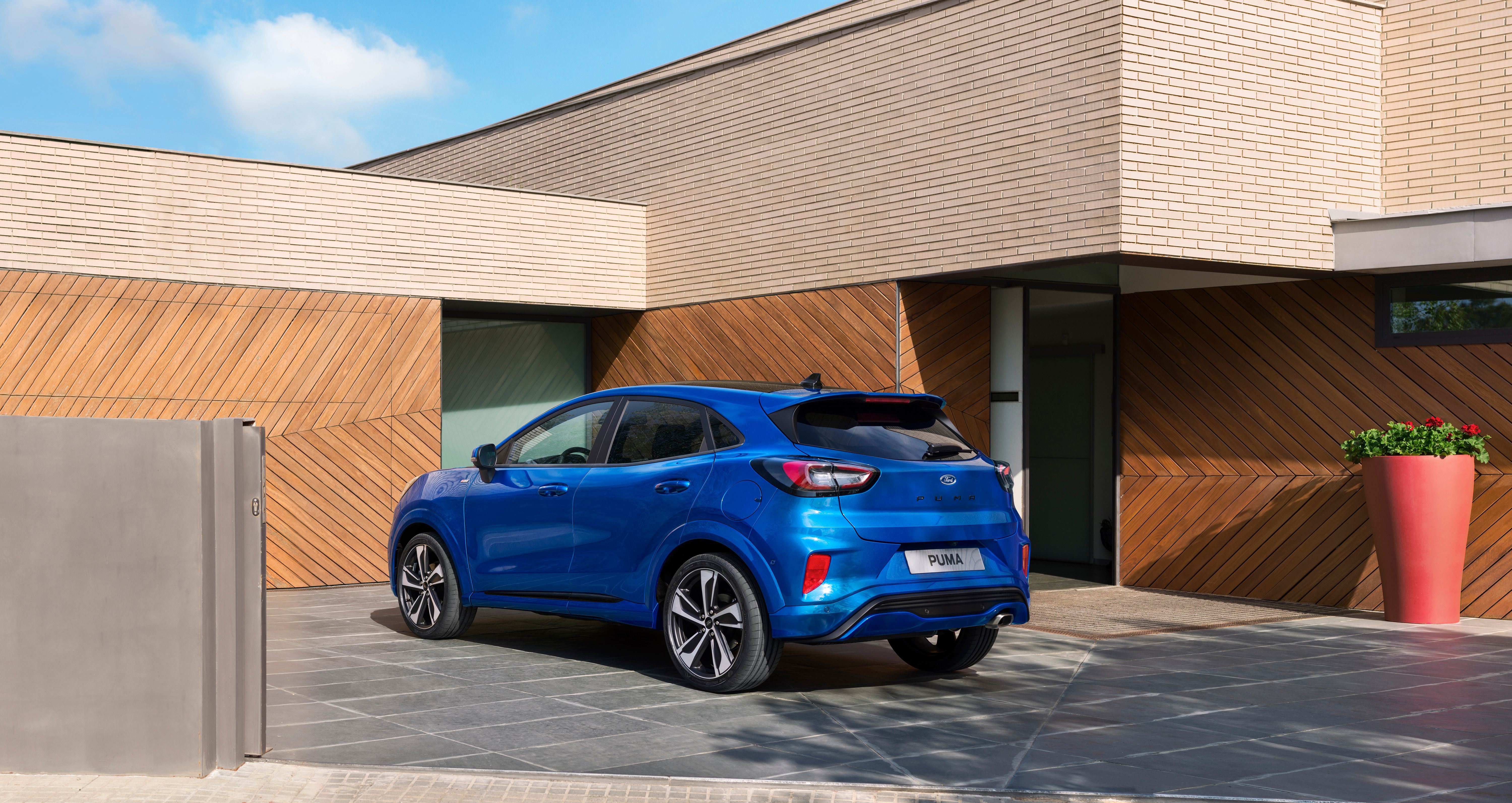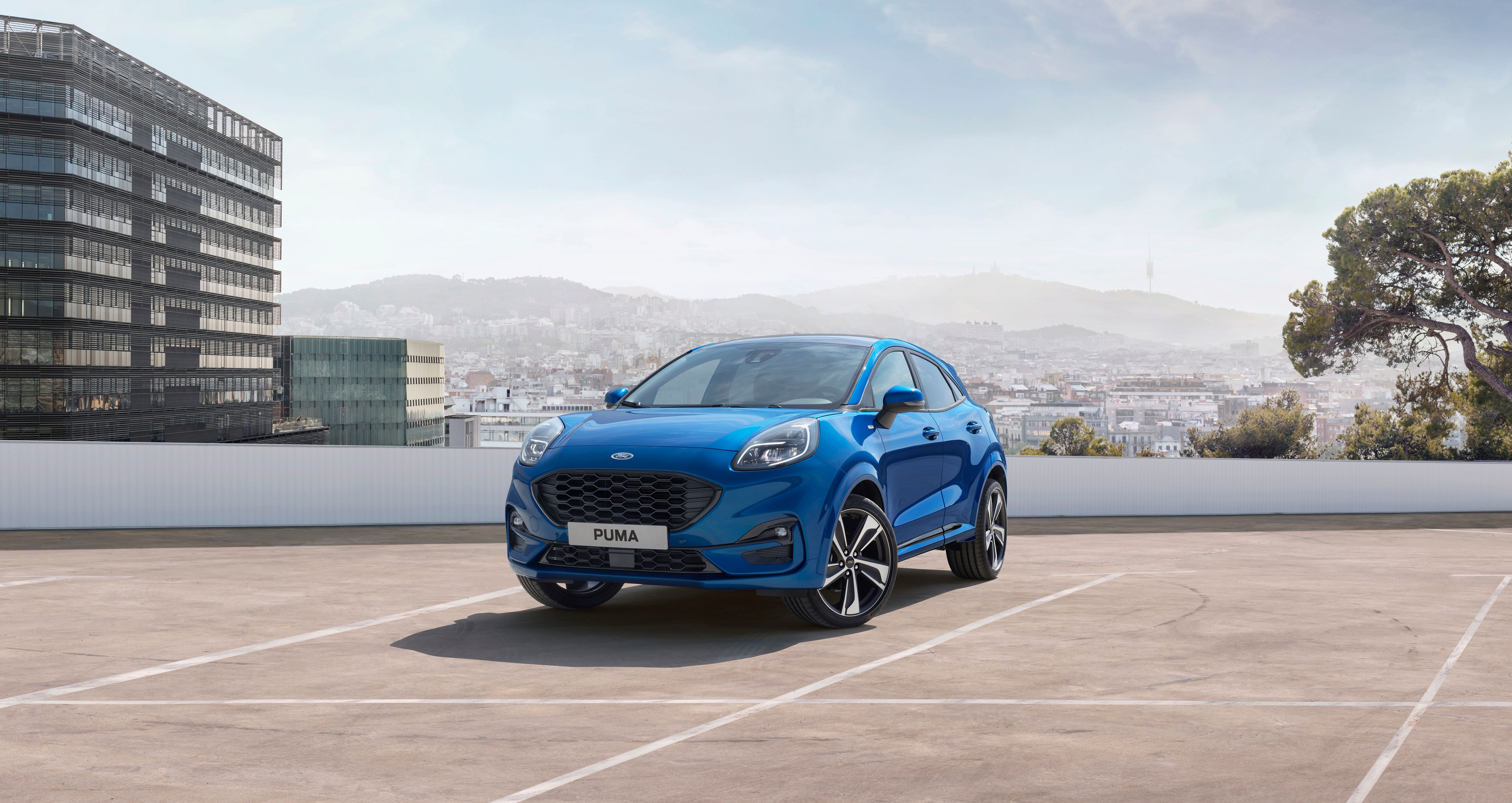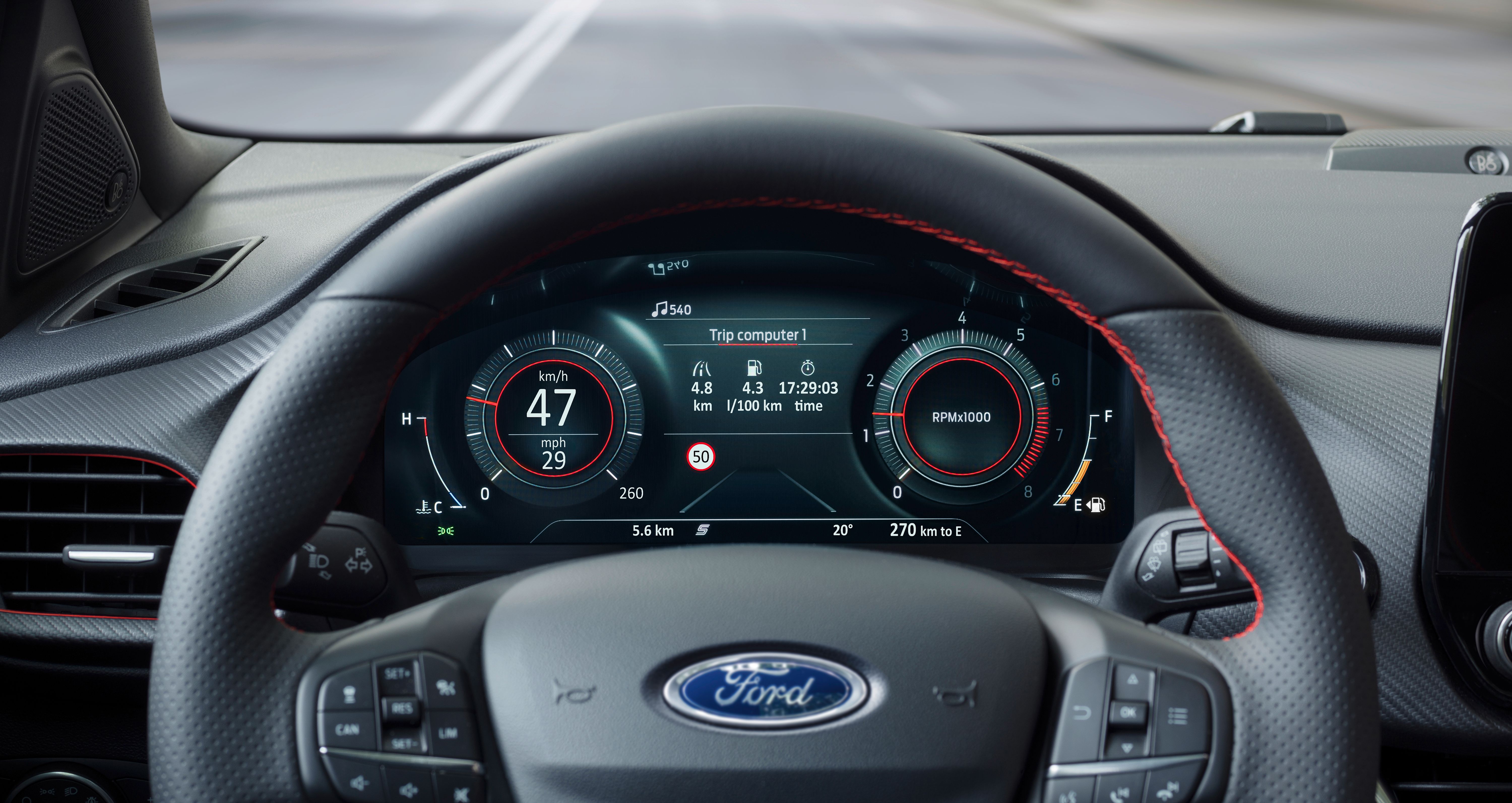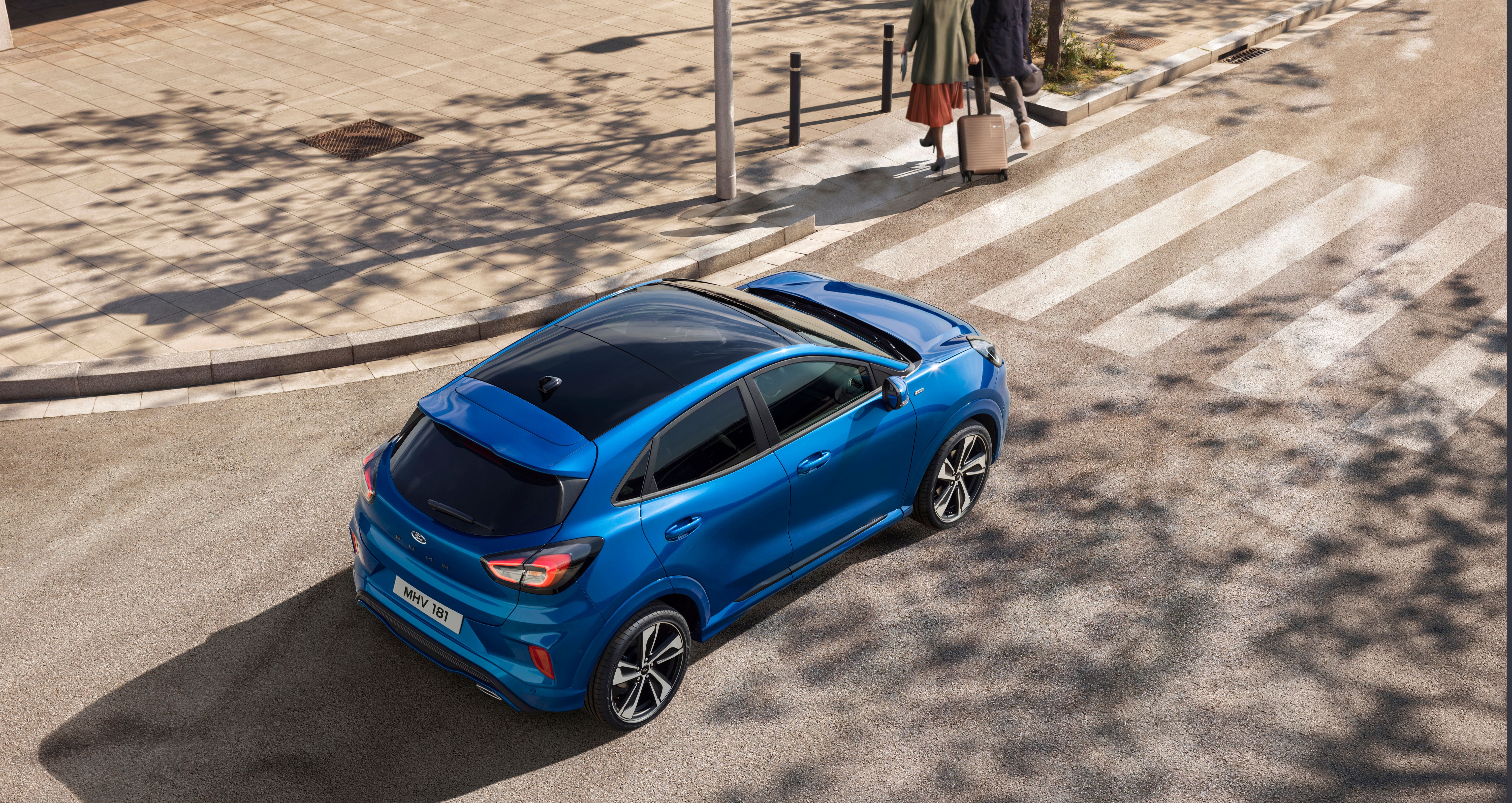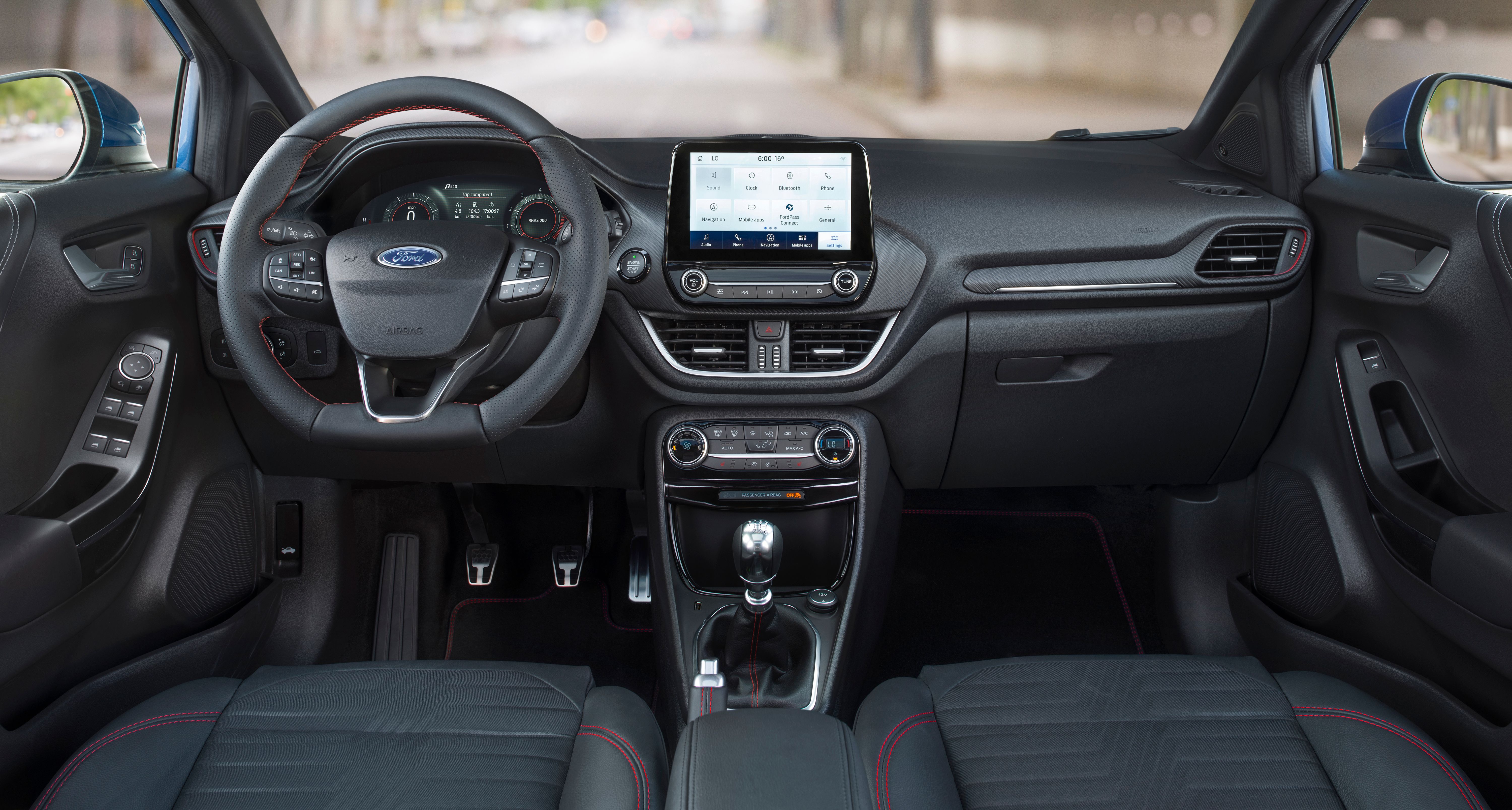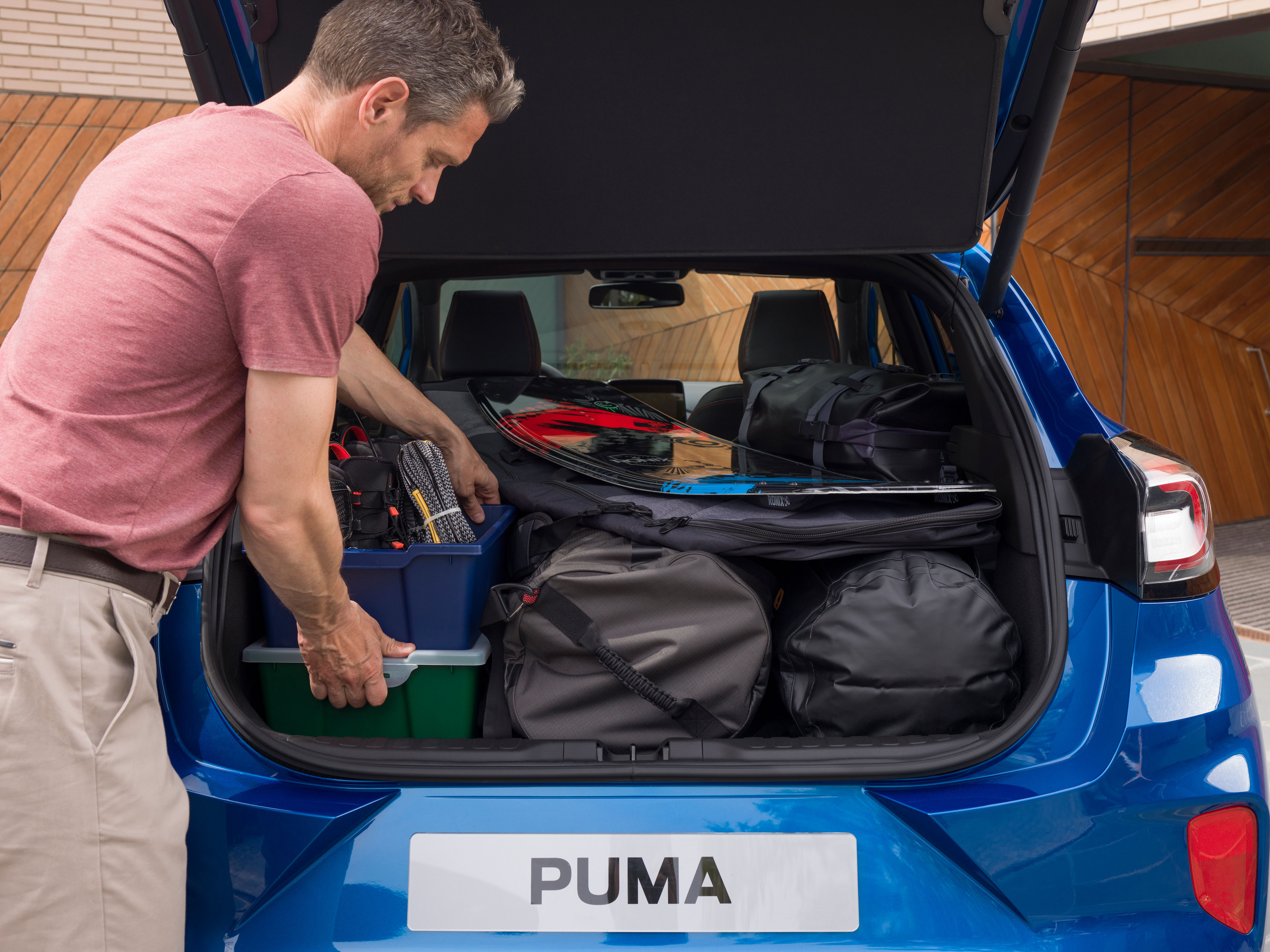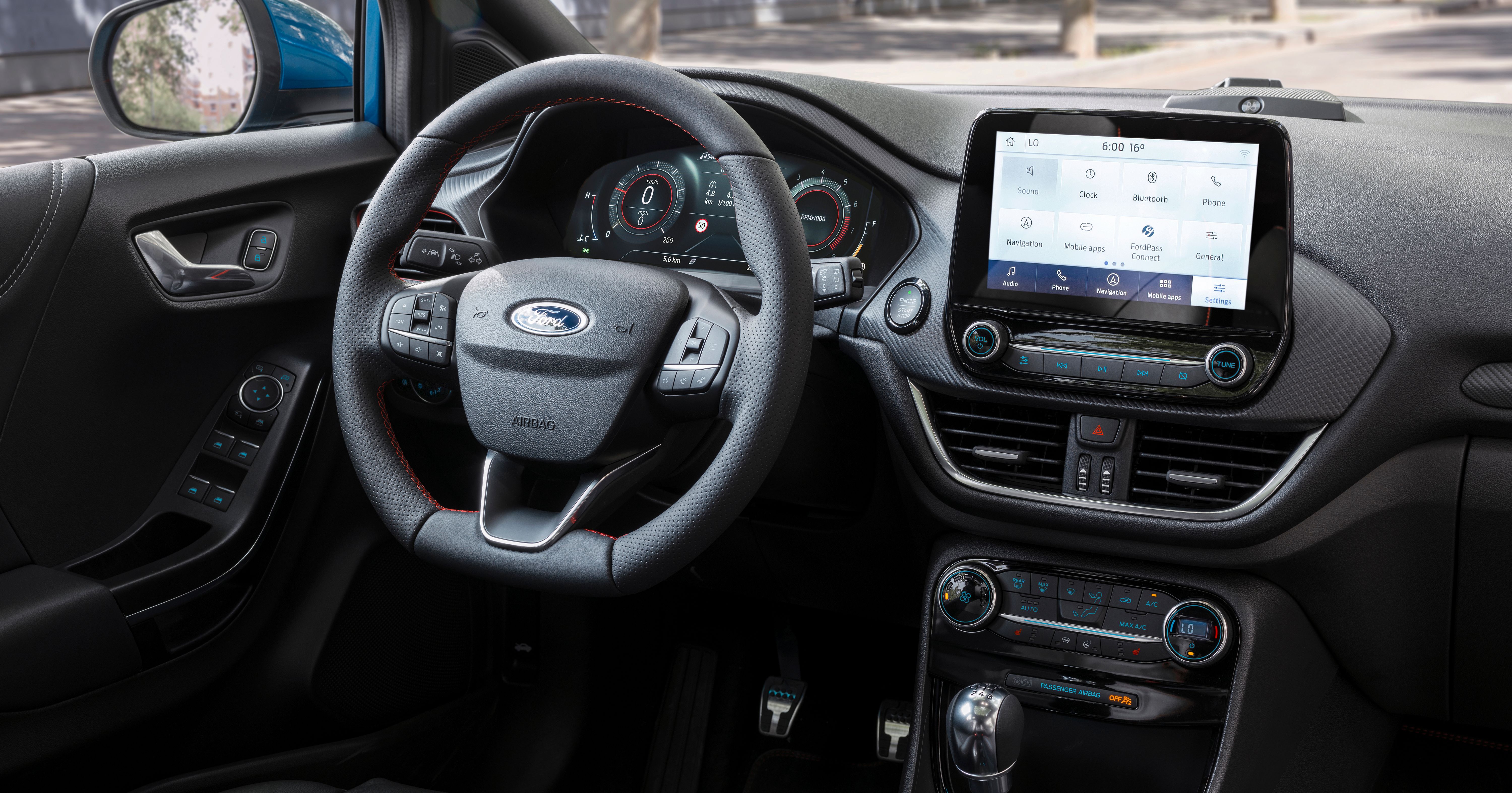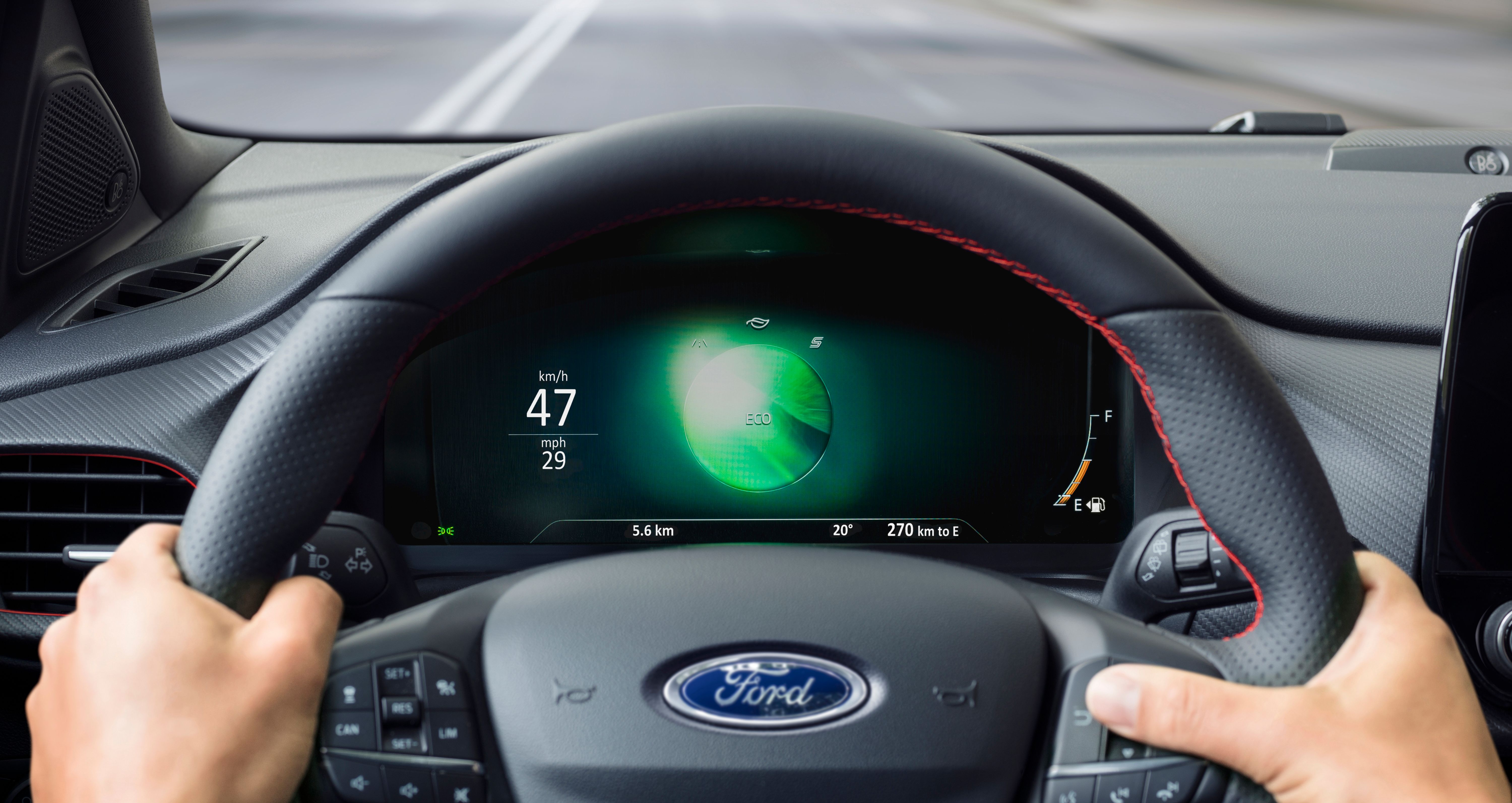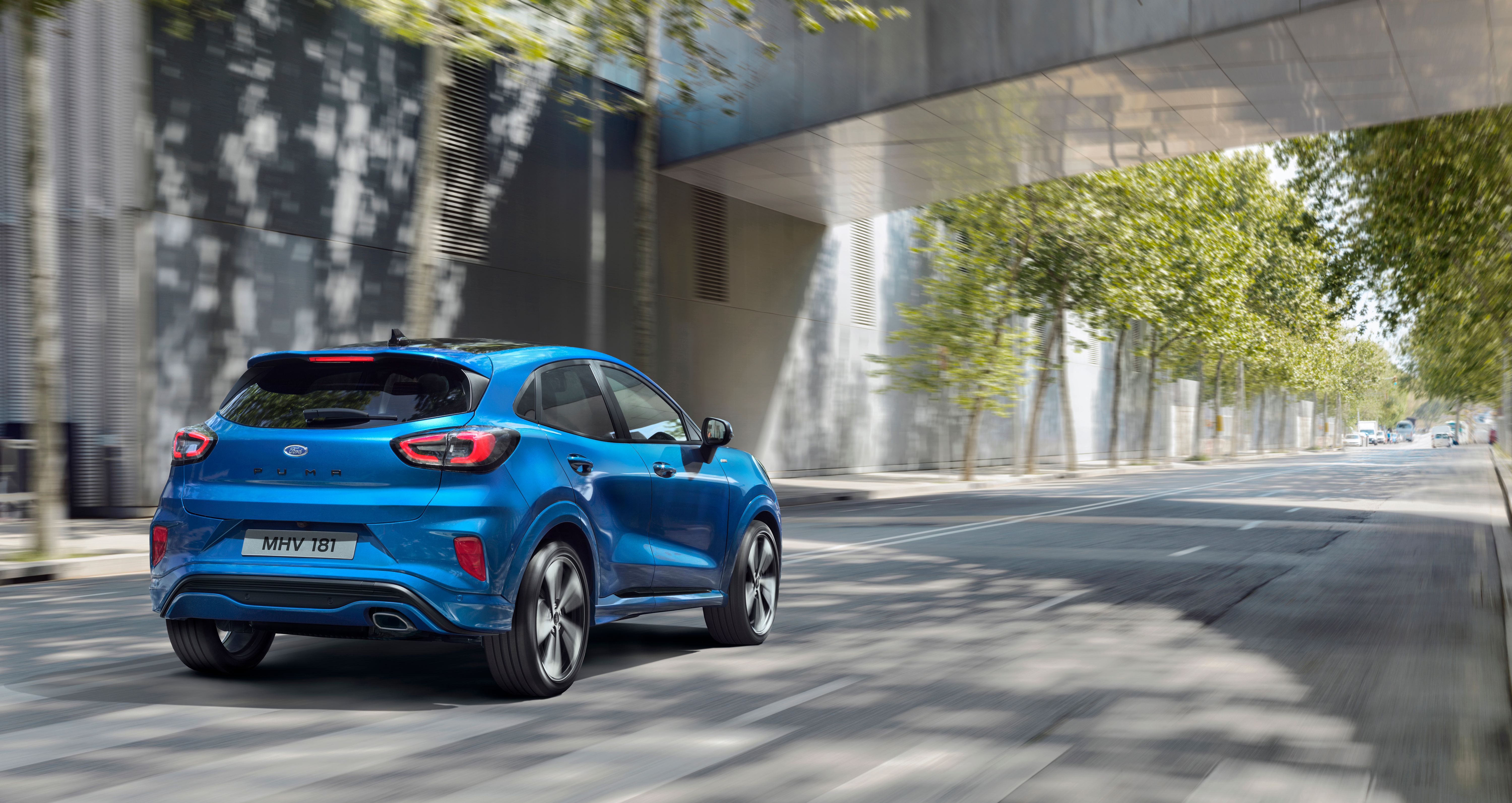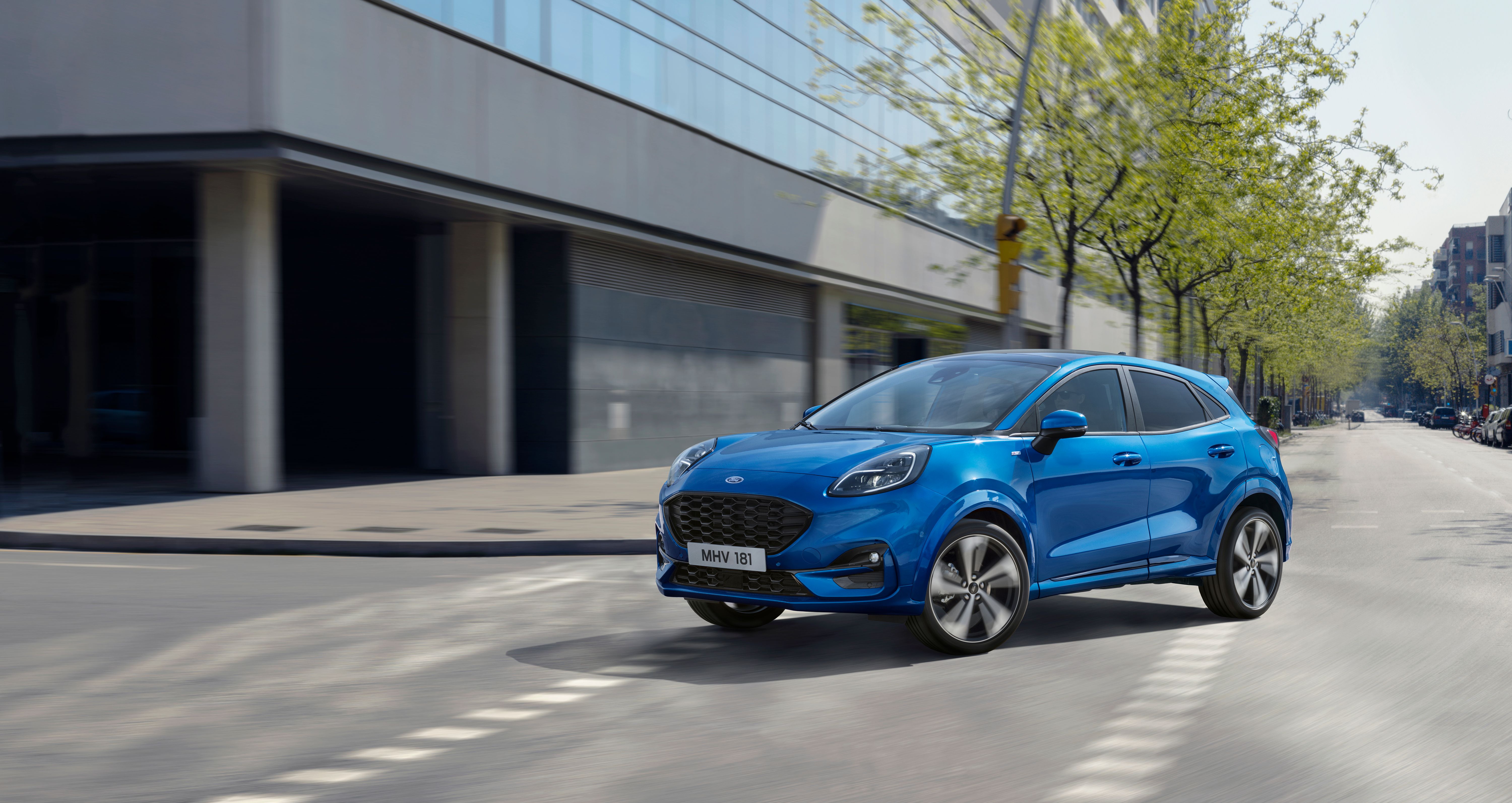Make way for another quirky, cutesy, bug-eyed city crossover that wants to muscle in on the Nissan Juke’s territory: the all-new 2020 Ford Puma. It's a funky new high rider from the Blue Oval that's big on style and ambition. The main talking point about the Puma mini-SUV has to be the way it looks because even in the crowded and highly competitive segment it’s trying to penetrate, it’s actually quite distinctive.
Ford has not only managed to create quite the striking pint-sized crossover shape, but it’s also one that evokes the previous model that bore this name, a Fiesta-based coupe from the mid-1990s. And that’s a good thing because nobody accused the original Puma of being ugly (quite the contrary, plus it’s actually aged pretty well too) and it was actually surprisingly popular for what it was back in the day.
Let’s talk design
Ford knows that in order to make a splash in the segment, its new Puma needs to make a good first impression. And it succeeds in this respect, with its bold flanks and tapering greenhouse, plus that cute face that just makes you want to pinch its little cheeks. It’s a properly bold face with high-set headlights and quite a large grille, yet it doesn’t look overly designed or fussy like its arch-rival, the Nissan Juke whose fascia has more going on than Picasso’s Guernica.
|
|
ids=846914,846915 |
no_overlay=false |
before_label=Ford Puma |
after_label=Nissan Juke> |
You really couldn’t call the Puma a mini-SUV, because it’s not really an SUV, it’s just a tall front-wheel drive-only hatchback. But since Ford sells it as such, we can compare it to other crossovers and, from the side, I think it looks better than most (premium) coupe SUVs on the market. It’s a great mix of sportiness and elegance that you really wouldn’t expect to find in a vehicle in its size and price bracket - kudos to Ford for having done such a good job with the design. It looks absolutely fantastic, at least in sporty ST Line trim.
Ford Fiesta vs Ford Puma
|
Wheelbase |
2,493 mm |
2,588 mm |
|---|---|---|
|
Length |
4,065 |
4,111 mm |
|
Width |
1,735 mm |
1,806 mm |
|
Height |
1,476 mm |
1,547 mm |
What makes the new Ford Puma crossover tick?
Both engines are hooked up to a six-speed manual gearbox as standard, but a seven-speed dual-clutch transmission will join the range at some point after launch. All-wheel drive isn’t available, though, and it won’t be added to the range. If you want all-wheel drive, then you’ll have to spring for the slightly larger and more practical EcoSport whose top tier versions do come with a front-biased AWD system.
Roelant de Waard, vice president, Marketing, Sales & Service, Ford of Europe, explains that the “1.0-litre EcoBoost engine has already proven that fuel efficiency and performance can go hand-in-hand. Our EcoBoost Hybrid technology takes that to the next level. We believe customers are going to love the smooth and urgent power delivery of our EcoBoost Hybrid powertrains just as much as they’ll enjoy less-frequent trips to the fuel pumps.”
What’s the new Puma like inside and how much tech does it have?
The Puma’s interior is very similar to that of the Fiesta, although since it will be sold at a slightly higher price point, it does feel a bit more upmarket. There are, for instance, places on the door panels that are soft and covered in a pleasant material which the Fiesta doesn’t have.
Space for driver and passenger up front are very good and while knee- and headroom are limited and the sloping roofline does make it feel like there isn’t much space back there, the Puma partly makes up for this by having a huge trunk (for its size). You really don’t get 456 liters of load volume in any other vehicle its size and it even has a practical two-level floor that you can either keep up so that you have a flat load surface with the rear seat backs folded, or you can lower it to make even more space. The trunk even has a drain hole at the very bottom, so that you can easily wash it clean with minimal worries.
One option that’s unique to the Puma in the segment are massaging front seats that rely on three air bladders each to provide comfort on longer journeys. Titanium models even come with removable seat covers (for cars with fabric seat) that have a zipper and can be thrown into a regular washing machine for cleaning.
It also comes with available adaptive cruise control complete with speed limit recognition and lane centering. There’s even a Road Edge Detection function that “can recognize where a paved road transitions to an impassable surface, such as a soft verge, gravel hard shoulder, or grass. The system can apply a torque to the steering wheel to prevent the vehicle from drifting off the carriageway.” If you’ve ever been in this situation, you’ll know just how useful something like this can be.
But the list of tech features continues.
There’s even a system called Wrong Way Alert that does exactly what its name suggests - it alerts the driver if the car goes past at least two “No Entry” signs. This is especially useful to avoid driving down the wrong way onto the highway which can have severe consequences.
The Puma’s backup camera Ford says has the widest angle in the class - it apparently shows a 180-degree view that essentially allows the driver to see not only what’s behind the car, but also what’s to the sides too; this is a very useful feature that will definitely avoid accidents such as backing into the path of an oncoming cyclist or another car.
What’s the history behind the Puma name?
It was named Top Gear’s car of the year back in 1997 and it was praised for “the incredible feeling and driving sensation.” It also won What Car’s “Used sports car of the year” award in 2001, as well as the “Best Best Used Sporting car of the year under £10,000” distinction in 2004 and then again the “Best gem for under Under £1,000” in 2011.
The new car won’t be built in Germany, but Ford’s Romanian plant in the town of Craiova. The same plant also builds the not-so-popular EcoSport mini SUV and with the new Puma crossover, the Blue Oval hopes to give the Romanian factory more to do (since production of the EcoSport is frequently stopped due to not enough demand for the model). But just like the old Puma coupe, this new crossover will only be sold in Europe, at least at first.
Further reading
Read our full review on the 2020 Ford Puma ST.
Read our full review on the 1997 - 2001 Ford Puma.

